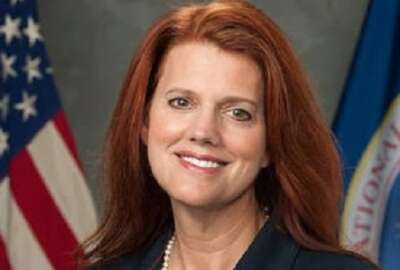When President Donald Trump spoke to steelworkers this week, he mentioned the U.S. would be sending people to Mars very soon. By coincidence, the current night sky presents a gazer’s delight. A full moon, a nearby Mars, Saturn clearly visible.
“Soon” is relative. It’ll probably be another two or three decades before humans visit Mars. Mars is at its closest-to-Earth point since 2003. It won’t be this close until 2035. Perhaps NASA will be ready to launch in time to reach Mars when the planet orbits a couple of billion miles closer than normal. The U.S. return to the moon will occur much sooner.
We’ve been running a series of interviews with NASA program executives working on the Space Launch System, the Orion crew capsule, and the James Webb Space Telescope. All these programs entail high cost and high risk but also great promise. I’ve had a deep dive into space, so to speak.
NASA has always been superb at public relations. What NASA does never loses its power to stimulate the imagination. So the press has always been receptive. The interviews have certainly kindled my own interest in space. Besides, what’s cooler than the fountain of explosive power that sends a 300-foot-tall rocket outa here?
Whether to go to Mars, the moon, or anywhere — those have been open questions.
The Webb telescope was the subject of an independent review published last month. The project is consuming billions in cost overruns. Its deployment is a decade late so far. The most recent delay resulted from mistakes by contractor Northrop Grumman. Had the errors occurred after launching the telescope, the device — the size of a panel truck — might not have worked. And, orbiting at a million miles out, it would and will be forever out of reach of repair missions. Program manager Gregory Robinson explained that all to me.
Here’s an eye-opening fact. The innards of the satellite have been finished for years. Engineers have been trying to get right a heat shield that will unfurl in space. I asked Robinson whether the long delay yields a chance to upgrade the electronics for faster processing. He said no. Instead the Webb will carry the circuitry with which it was first built, even after sitting all this time. That’s because the reliability testing was so extensive, changing out electronics would be like starting over.
I remember when a crew corrected the “nearsighted” Hubble space telescope back in 1993. It orbits at only 350 miles above the Earth. Hubble launched seven years after the originally scheduled date. It too ran way over budget. But here it is 25 years after the correction, still streaming back data. Just these past few weeks Hubble has sent great pictures of Saturn and Mars. Quite a dust storm envelopes Mars.
As things stand now, NASA hopes to launch the Webb telescope in 2021. Even critics believe the scientific information it eventually delivers will have been worth the troubles. It will see light from about 15 billion years after the formation of the universe.
NASA has a strategy of private sector launches for near Earth orbit. But for returning to the moon, it’s restarted the classic model of integration its own big rocket. It will be a hybrid of Saturn V and Shuttle design The Space Launch System and Orion combo is scheduled to launch sometime in early 2020.
An interesting detail comes from Bill Hill, the deputy associate administration for exploration systems development. NASA has available 16 RS-25 engines, enough for four launches. I asked him what happens after that. He said NASA is working with builder Aerojet Rocketdyne to restart production.
Orion will take up to six people into deep space, but not to Mars. NASA is still workout that one out. People won’t be able to sit in a cramped capsule for the two years it’ll take to get there. Figuring out how to feed, exercise and entertain people that long will likely happen before anyone figures out “stasis,” like in Alien.
To the steelworkers, Trump said, “If you don’t have steel you don’t have a country.” I’d add, without the scientific exploration of space, the U.S. wouldn’t be quite the same.
Copyright
© 2024 Federal News Network. All rights reserved. This website is not intended for users located within the European Economic Area.
